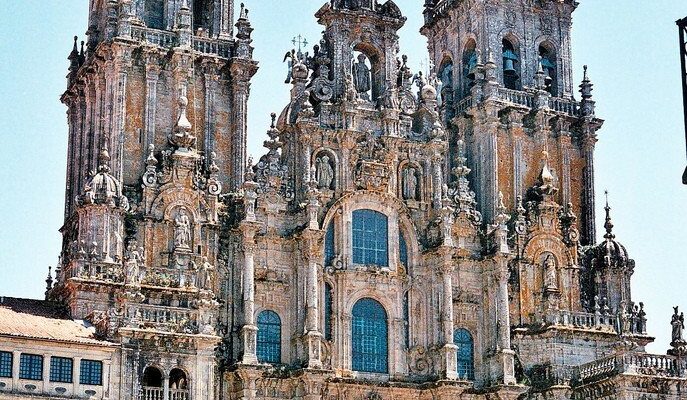Cathedral of St. James (Cathedral of Santiago de Compostela)
St. James Cathedral, a huge cathedral with the relics of St. James (Santiago), is located in the heart of the Spanish city of Santiago de Compostela. For 10 centuries pilgrims have been making the long journey to this place. To the Spaniards the cathedral is especially dear. According to legend, the Apostle was a preacher in Roman Spain. When he returned to Judea, he was executed, after which his remains were taken by his admirers to Galicia. After a long neglect, in the 9th century, the relics were discovered, leading to the construction of a cathedral and the organization of a pilgrimage (Camino de Santiago, or Way of St. James). The spread of Christianity in northern Spain led to a movement against the Moors in al-Andalus, and later became the rationale for the conquest of the New World.
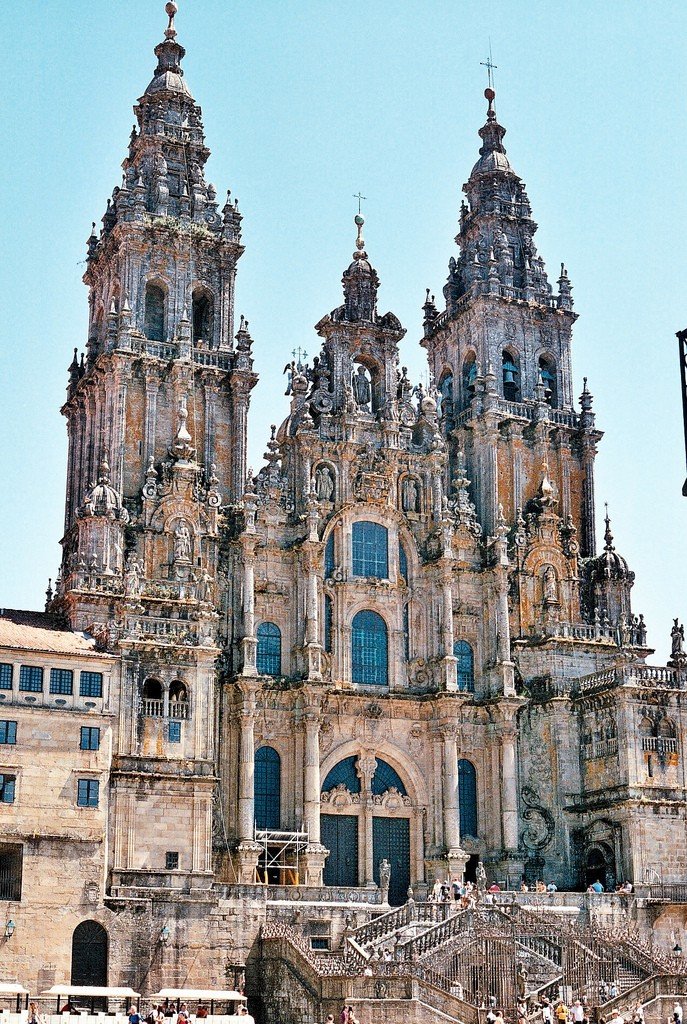
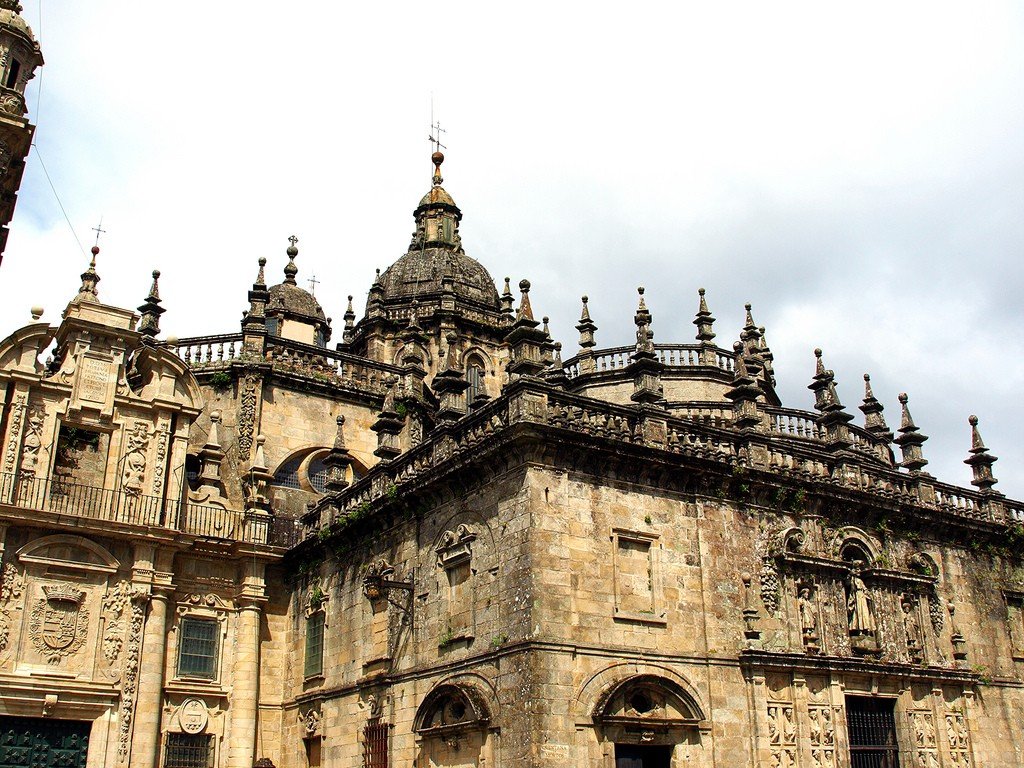
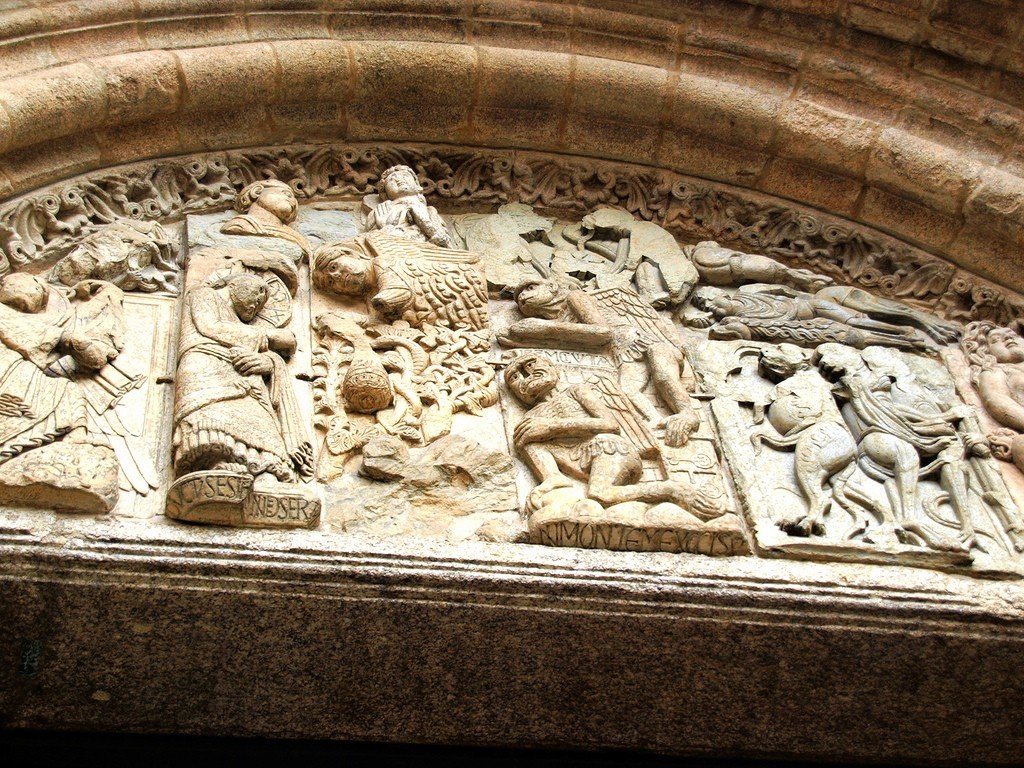
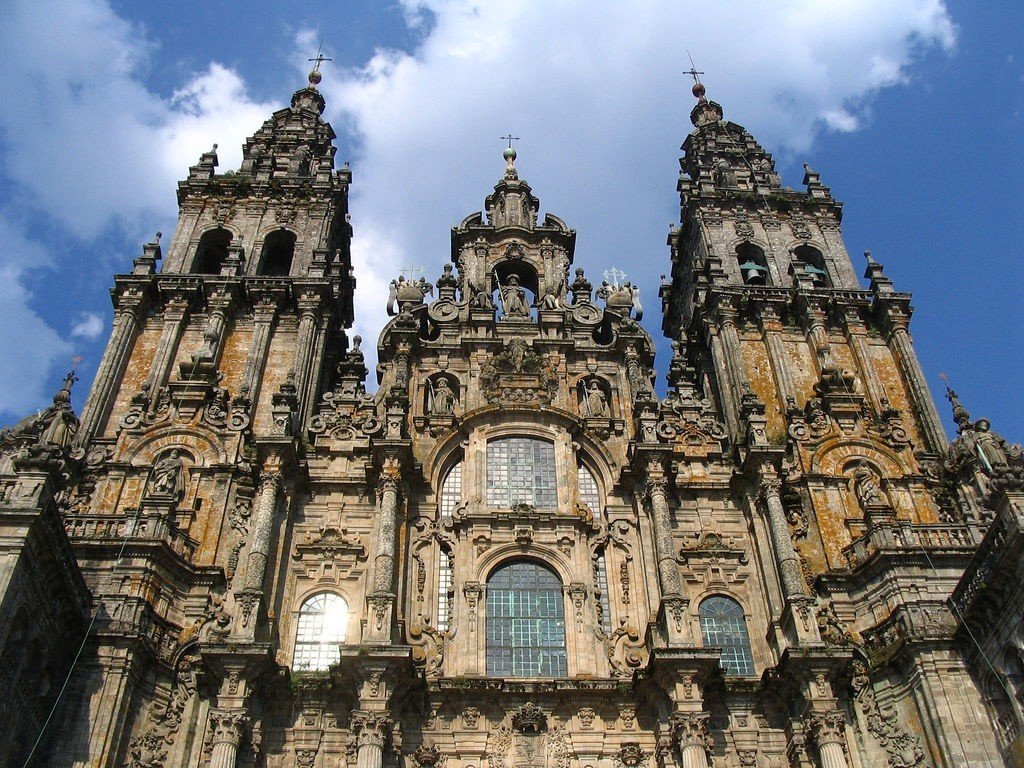
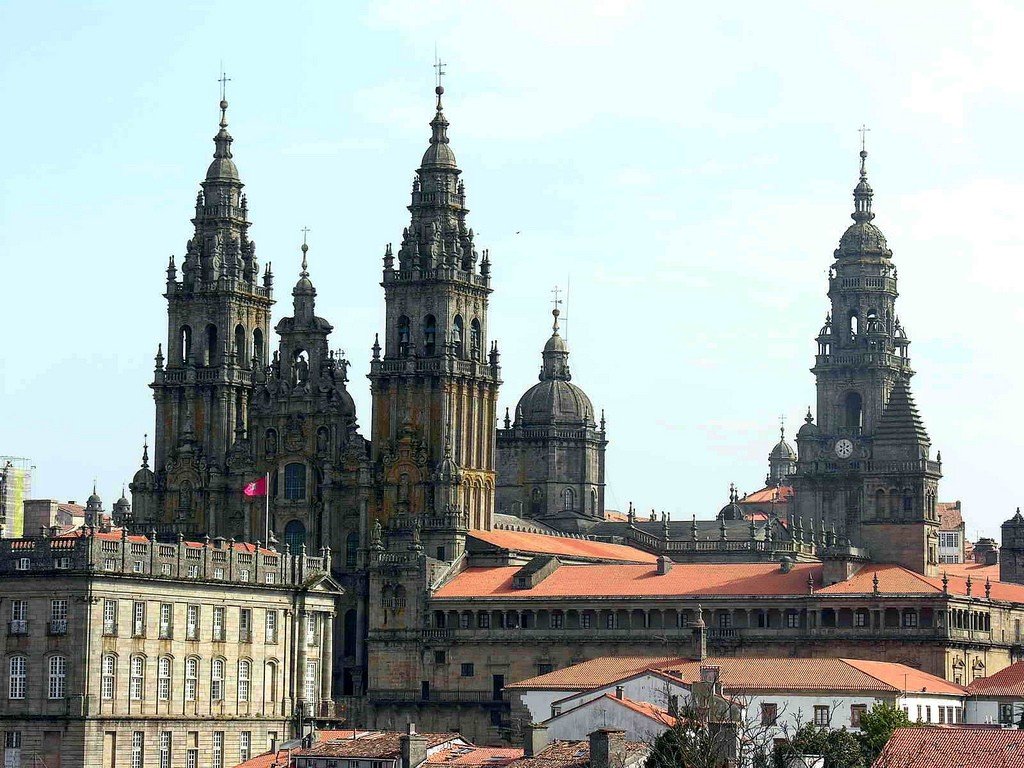
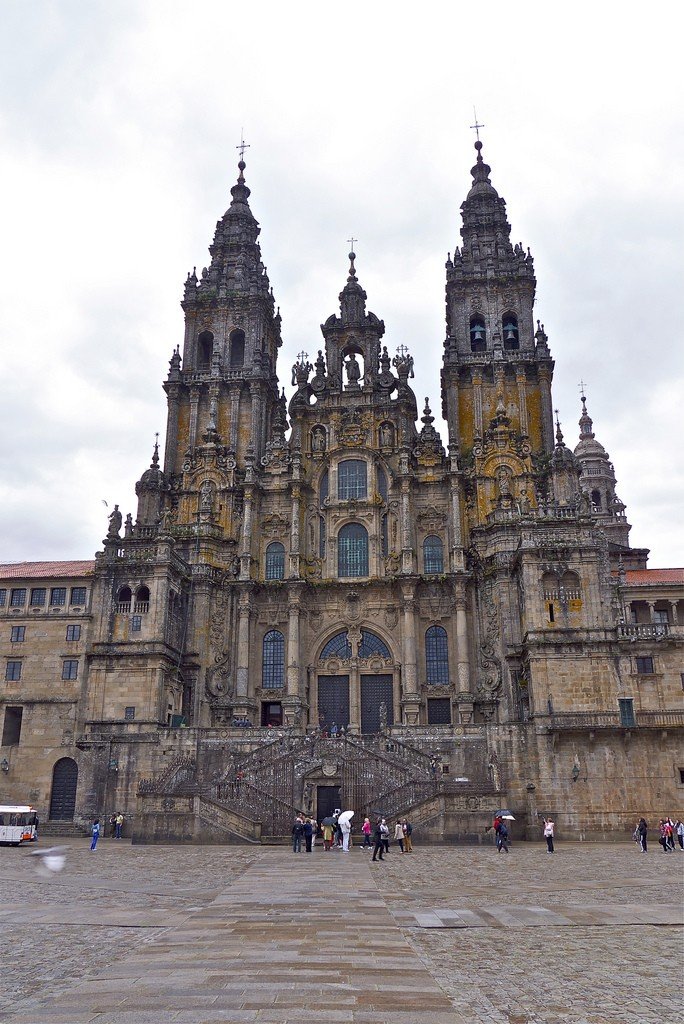
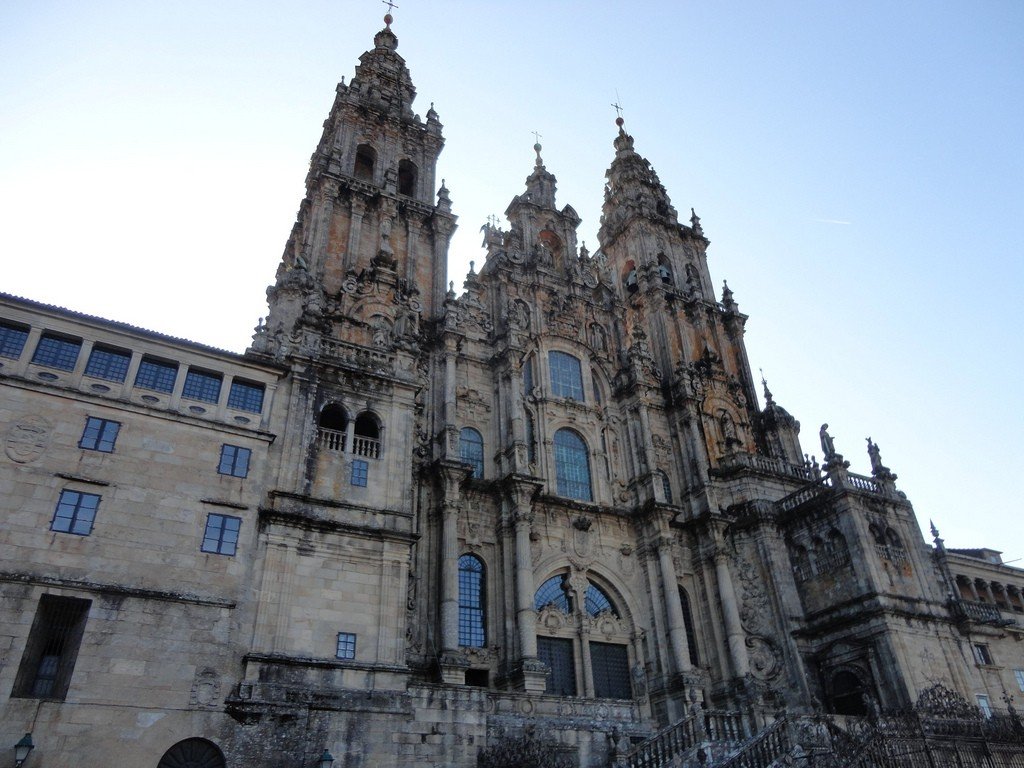
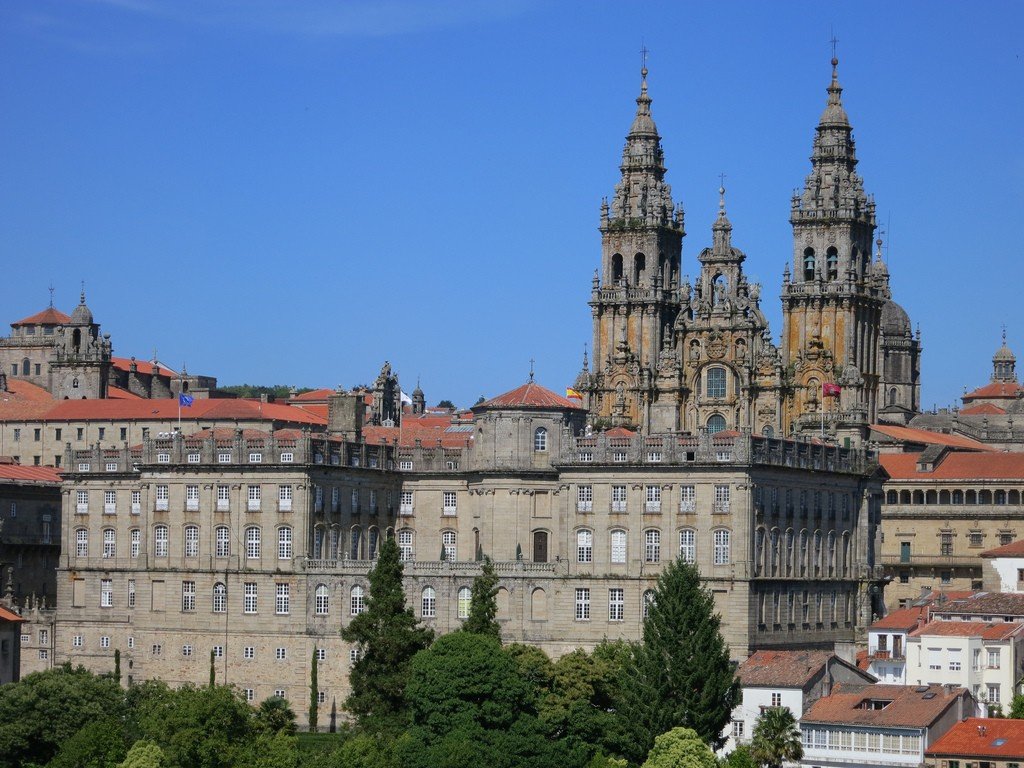
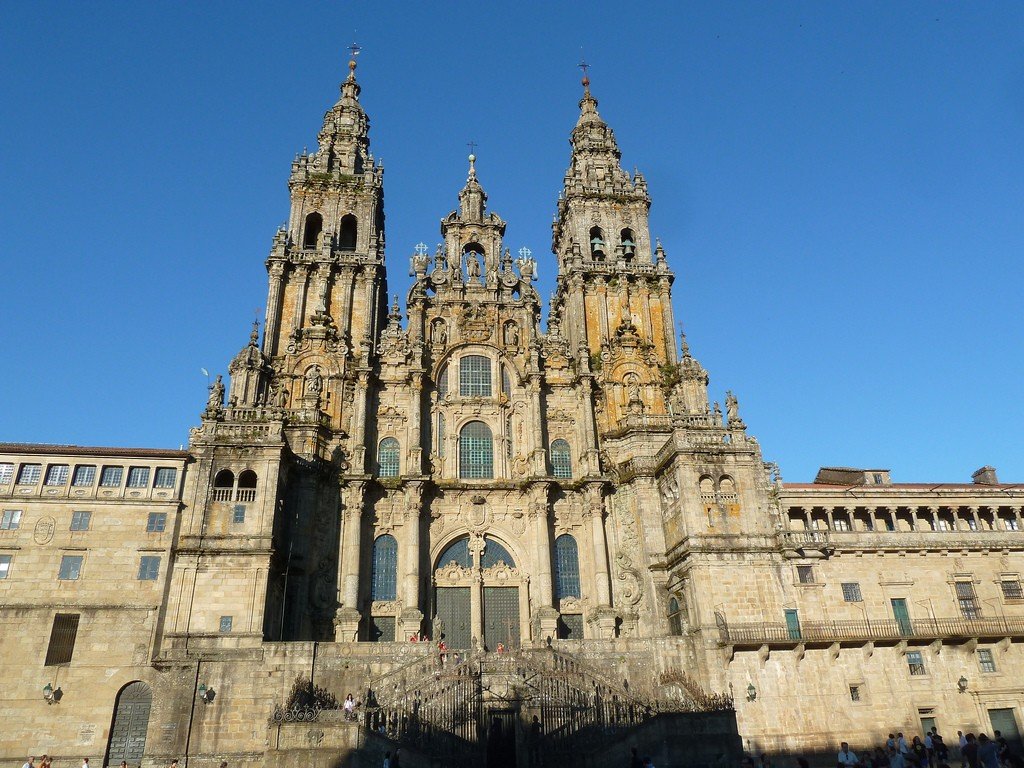
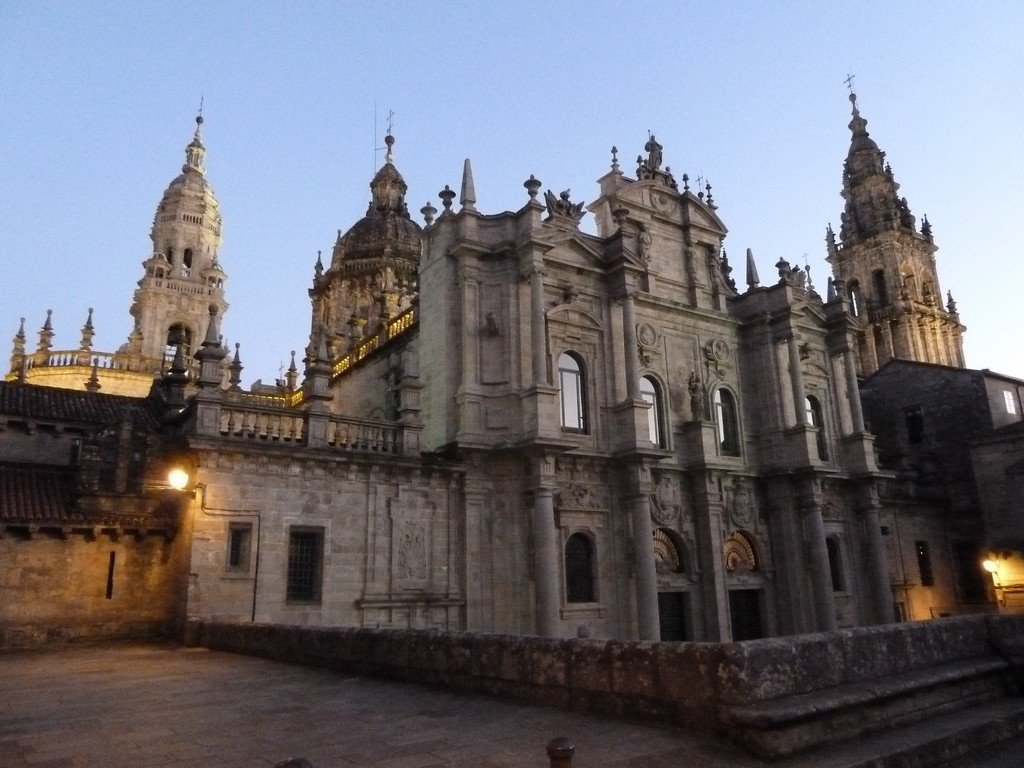
General information
The massive cathedral building rises proudly between four squares. The richly decorated towers, intricately carved entrances and baroque facade form an architectural symphony of historical eras and styles. From the eleventh to the thirteenth centuries, the cathedral was built in Romanesque style, but then rebuilt. Look at the main west facade on the Praza do Obradoiro side, a Baroque masterpiece by Fernando Casas y Nova (1750). It was made of granite the color of gold and decorated with paired towers that emphasize the kinship between Gothic and Baroque. When you climb the steps inside, you will see the magnificent Portico of Glory, created by Master Mateo in 1188. For centuries pilgrims have touched the central column in gratitude for the successful completion of their journey, and these touches have left their marks on the stone. Nearby is a statue of Santo dos Croques, i.e. “the saint with bumps” – perhaps a self-portrait of Master Mateo himself. It is said that whoever bumps his head on it will gain wisdom. At the top of the central part of the facade, under a stone canopy with a turret, stands the figure of St. James.
.To avoid the long line to the eastern portal (Puerta Santa), where the passage to the crypt with the relics of St. James is located, you can bypass the southern façade on the side of Praza das Praterias and enter the cathedral through the Puerta de las Platerias. There are remarkable sculptural reliefs with biblical subjects, figures of Adam and Eve and the scourging of Christ (1103).
.
Despite the many visitors, the inside of St. James Cathedral remains a working environment, with the numerous confessionals and side aisles kept busy at all times. During large festivities, a huge chimney (botafumeiro) hangs from under the dome, swung like a pendulum by 8 men over the high Baroque altar. The treasury, the 16th-century covered galleries and the crypt museum can be toured with a single ticket. The treasury (in the south aisle on the right, facing the altar) contains a gilded bust of St. James of Alfea (1332) and his relics. From the transverse nave (transept) one can pass to the covered galleries of the XVI century, made in the Plateresco style. The upper floors, decorated with Flemish tapestries, offer a beautiful view. The museum-crypt displays modern models of the zither, viola and lute with which the elders on the Portico of Glory are depicted.
.History
The Cathedral of St. James was built on the site of a small 9th-century basilica and quickly became the third most important center of Christian pilgrimage, after Jerusalem and Rome. The roads that led here were provided with shelters, refuges, and ecclesiastical buildings. Pilgrims would leave Tours, Vezelay and Le Puy in France, go through Ronceval or Somport in the Pyrenees and meet at Puente la Reina to continue their 13-day French journey together. The journey became so popular that in the 12th century a kind of guidebook for pilgrims (the Book of St. James) was even written, detailing the areas encountered and their inhabitants. And the Basque Country and Navarra were characterized in rather harsh tones, while information about Castile and especially Galicia was more poetic: “these are lands adorned with rivers, meadows and wonderful gardens, here grow wonderful fruits and have crystal clear springs, the area abounds in gold and silver, fabrics and furs, as well as other riches. Encouraged pilgrims traveled here from Portugal, Germany, the Netherlands, Italy, sailed from England and the Scandinavian countries. But still the French Way dominated, and has retained its importance to the present day.
Towns and villages stretched along the route; bridges and Romanesque and Gothic buildings were built. In addition to shelters and hospitals, pilgrims needed protection from robbers. This function was performed by castles, forts and military-religious orders like the Knights of Santiago. Amulets associated with the Way of St. James were also traded here.
.
Pilgrim status was confirmed by a scallop shell. An old guidebook contained a legend about St. James: a certain rider threw himself into the waves off the Portuguese coast at the very moment when the ship with the apostle was there. Miraculously, horse and rider emerged from the abyss in scallop shells. From this legend came the symbol, which has been used as the official road sign on the Way of St. James since 1987.
.